Sleeping cuckoos by Luke Chambers (UK).
Still with a few drops of morning dew on them.
The UK’s leading insect science charity has announced the winners of itsannual photo competition.

“Sleeping cuckoos” by Luke Chambers (UK). First Place, Over 18.Species: Black-thighed Cellophane-cuckoo bees, Epeolus variegatus“Two cuckoo bees (Epeolus variegatus) fast asleep, grasping onto the grass with their mandibles. Still with a few drops of morning dew on them.”
Luke Chambers was named the overall winner for his interesting look at two bees and their unusual sleeping habits.
Sleeping insects also netted 17-year-old Gustav Parenmark the win in the under 18 division.
His winning image showsa banded demoiselle damselfly at rest.
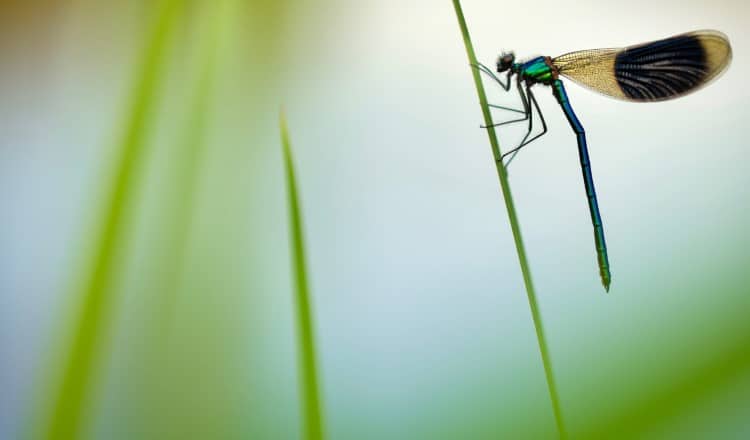
“Tranquility” by Gustav Parenmark (Sweden). First Place, Under 18.Species: Banded Demoiselle damselfly, Calopteryx splendens, male“I was able to find many of these gorgeous banded demoiselle by a river near my home in Gävle, Sweden. With the help of the nearby blades of grass I could create foreground and background elements in order to create depth in the image.”
Waking up early is the key to photographing sleeping odonates, he shares.
Scroll down to see our favorite winners and finalists of the 2023 Royal Entomological Society photo contest.
Here are the winners of the 2023 Royal Entomological Society photo contest.
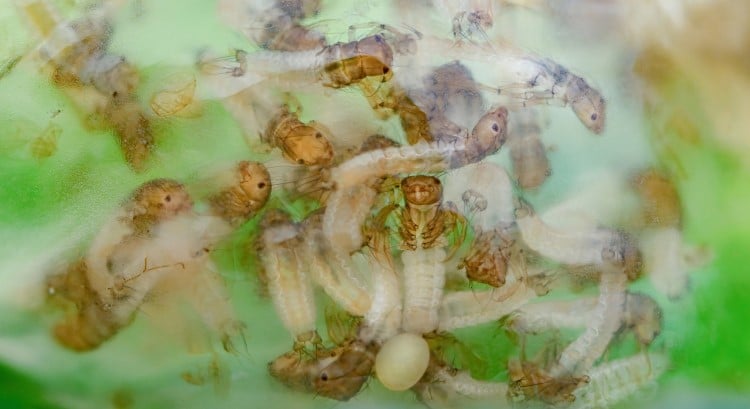
“Caddisfly larvae in a jelly egg sac” by Tim Jonas (UK). Second Place, Over 18.Species: Mottled Sedge caddisfly, Glyphotaelius pellucidus“Photographed in-situ on a leaf overhanging water, this image shows recently hatched caddisfly larvae inside a transparent gelatinous egg sac. The larvae will drop into the water where they live as aquatic insects throughout the larval and pupal stages.”
Tranquility by Gustav Parenmark (Sweden).
Caddisfly larvae in a jelly egg sac by Tim Jonas (UK).
The larvae will drop into the water where they live as aquatic insects throughout the larval and pupal stages.
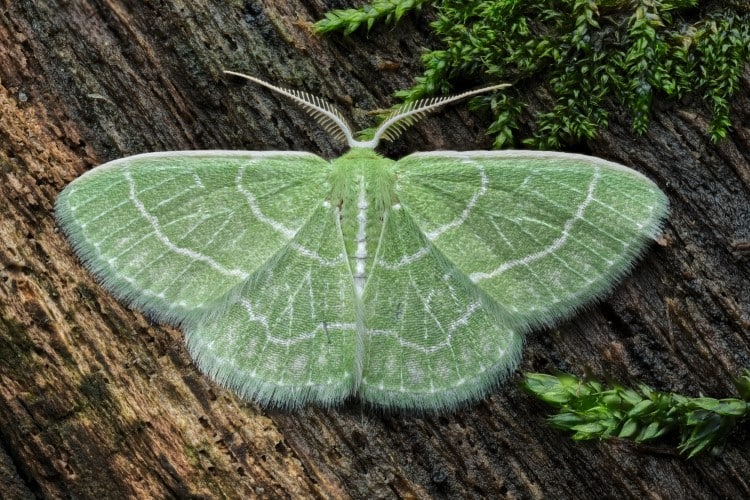
“A forest gem” by Alexander McKerracher (Canada). Environment Specially Commended.Species: Wavy-lined Emerald Moth, Synchlora aerata, male“This photo features a beautiful Wavy-lined Emerald Moth sitting on a mossy log. Taking a break from its adventures through the trees, this moth is displaying all of its beauty for us to appreciate.”
A forest gem by Alexander McKerracher (Canada).
Purple Fire by Gustav Parenmark (Sweden).
Look into my eyes by Pete Burford (UK).
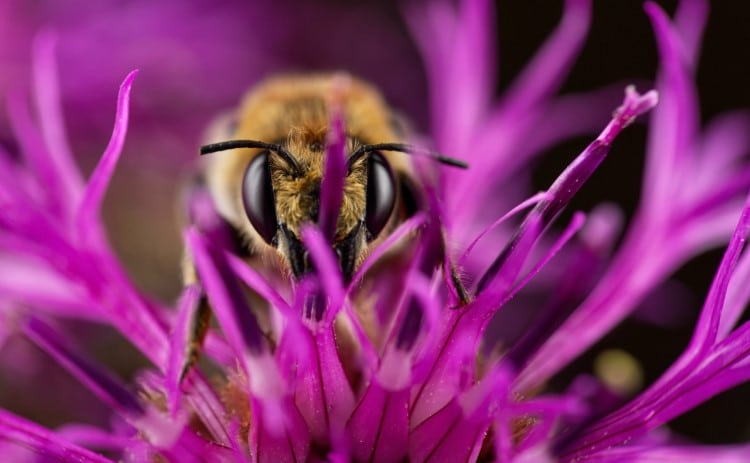
“Purple Fire” by Gustav Parenmark (Sweden). Under 18 Specially Commended.Species: Leafcutter bee, Megachile lagopoda“The nature reserve of ”Södra Hällarna”, located on the western coast of Gotland, Sweden is home to a very delicate fauna of bees, such as this Megachile lagopoda, a powerfully built insect that I found sleeping in some greater knapweed, (Centaurea scabiosa).”
Portraits Specially CommendedSpecies: DamselflyHere is a Damselfly covered in Dew in the middle of the night.
Insects are cold blooded, so as the temperature cools at night, they are unable to move.
Dew then sticks to the Damselfly and covers it completely.
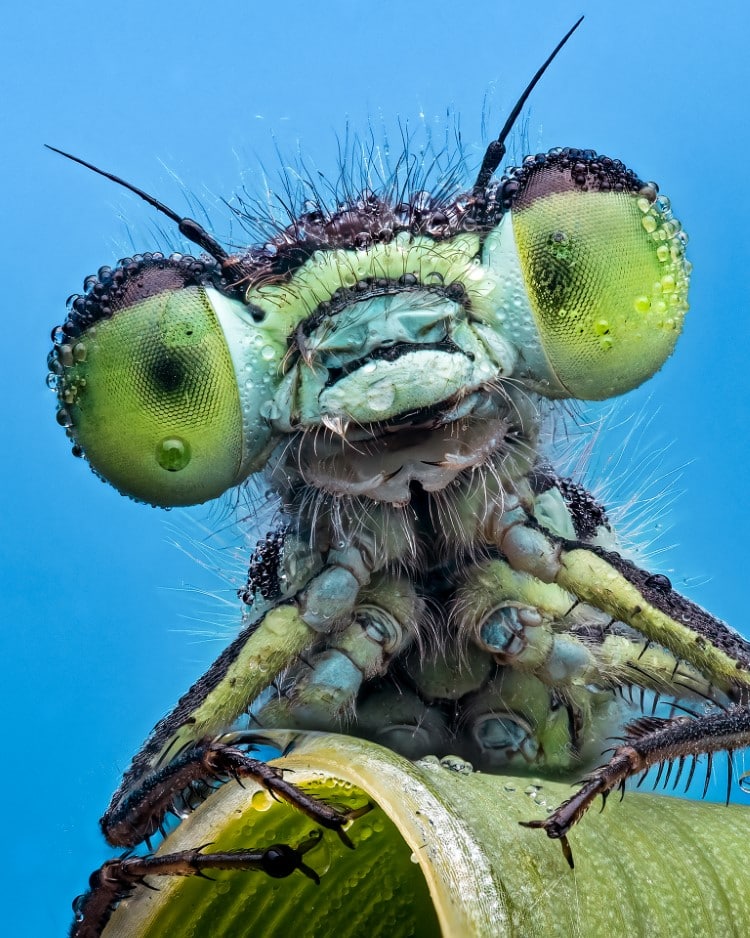
“Look into my eyes” by Pete Burford (UK). Portraits Specially CommendedSpecies: Damselfly“Here is a Damselfly covered in Dew in the middle of the night. Insects are cold blooded, so as the temperature cools at night, they are unable to move. Dew then sticks to the Damselfly and covers it completely.”
Pollinator by Michael Wood (UK).
Over 18 Smartphone Specially Commended.Species: Common carder bumble bee, Bombus pascuorumA bee doing bee things.
Gold digger by Paul Fraser (UK).
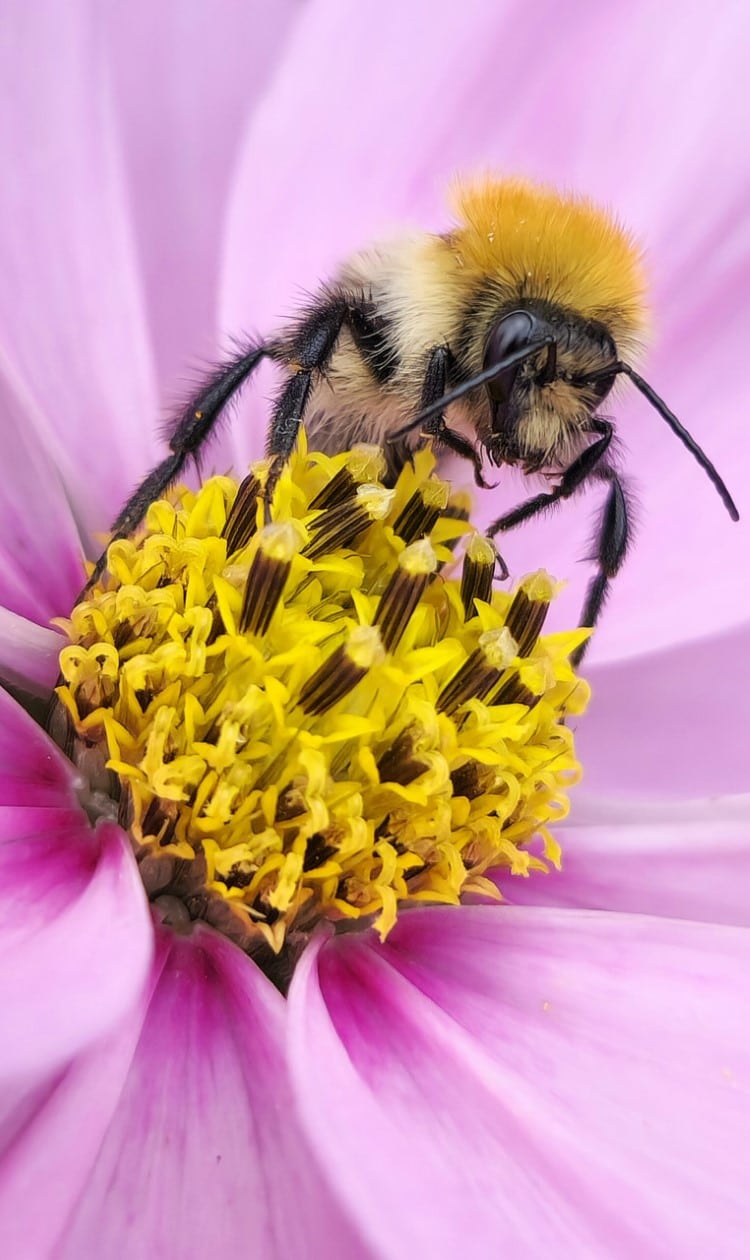
“Pollinator” by Michael Wood (UK). Over 18 Smartphone Specially Commended.Species: Common carder bumble bee, Bombus pascuorum“A bee doing bee things.”
Photography like this provides a window into the astonishing complexity and beauty of the insect world.
Robber fly breakfast by Jamie Smart (UK).
I didn’t realize until looking on the computer that he was actually eating another fly!

“Gold digger” by Paul Fraser (UK). Portraits Specially Commended.Species: Digger Wasp, Crabonidae“A close-up portrait of a digger wasp species that I found excavating chambers in a raised bed planter at my work.”
Crimson-speckled moth perching by Abdullah Shehabuddeen (Saudi Arabia).
This photo reflects nature’s astounding colors and beauty.
A wasp joined us for a cream tea by Abi Batten (UK).
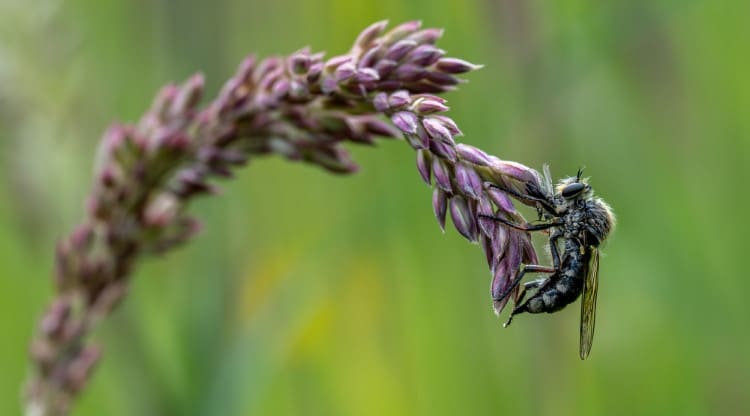
“Robber fly breakfast” by Jamie Smart (UK). Second Place, Under 18.Species: Slender-footed robber fly, Leptarththrus brevirostris“I was up early one morning and decided to have a wander around our wild garden with my camera when I saw this fly on grass. I didn’t realize until looking on the computer that he was actually eating another fly! Double whammy!”
Moths and mountains by Marian Coburn (UK).
These are two Scottish mountains (Munros).
Natures jewels by Nikita Richardson (Australia).
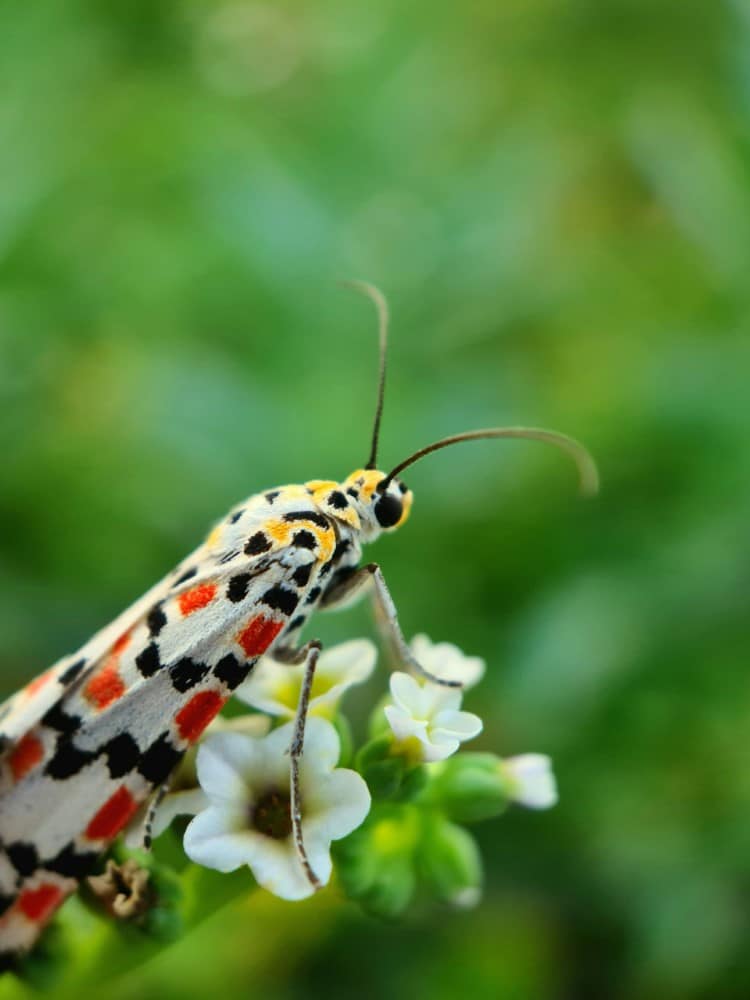
“Crimson-speckled moth perching” by Abdullah Shehabuddeen (Saudi Arabia). Under 18 Smartphone Specially Commended.Species: Crimson Speckled moth, Utetheisa pulchella“A white moth, spotted all over with beautiful red, orange, yellow, and black patterns, is perched onto delicate white flowers that contrast against the lush background greenery. This photo reflects nature’s astounding colors and beauty.”
Behavior Specially Commended.Species: Cotton harlequin bugs, Tectocoris diophthalmus, final-instar nymphs.A cluster of male harlequin bugs.
Earwig by Zhang Yimeng (China).
Junk bug by Rosa Dunbar (Australia).
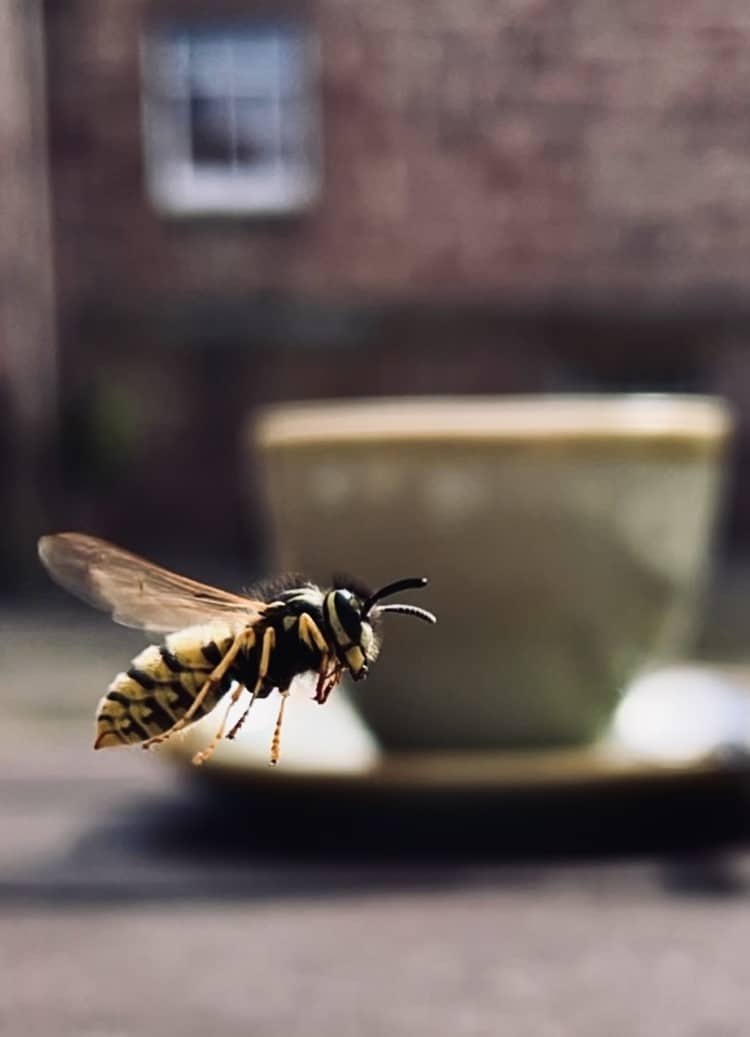
“A wasp joined us for a cream tea” by Abi Batten (UK). Smartphone Specially Commended.Species: German wasp, Vespula germanica“Wasp who seemed to enjoy sharing a cream tea with us, favored raspberry jam over blackcurrant and was very polite.”
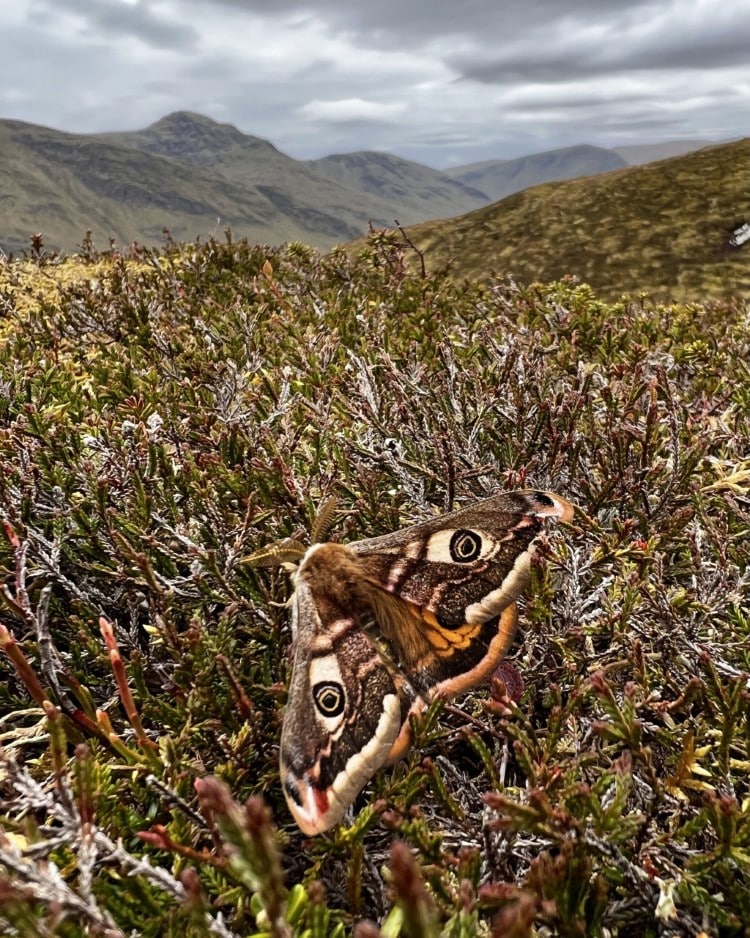
“Moths and mountains” by Marian Coburn (UK). Over 18 Smartphone Specially Commended.Species: Emperor moth, Saturnia pavonia, male“A male Emperor moth (Saturnia pavonia) at rest on heather on the slopes of Meall Buidhe with the peak of Stuchd an Lochain in the background. These are two Scottish mountains (Munros).”
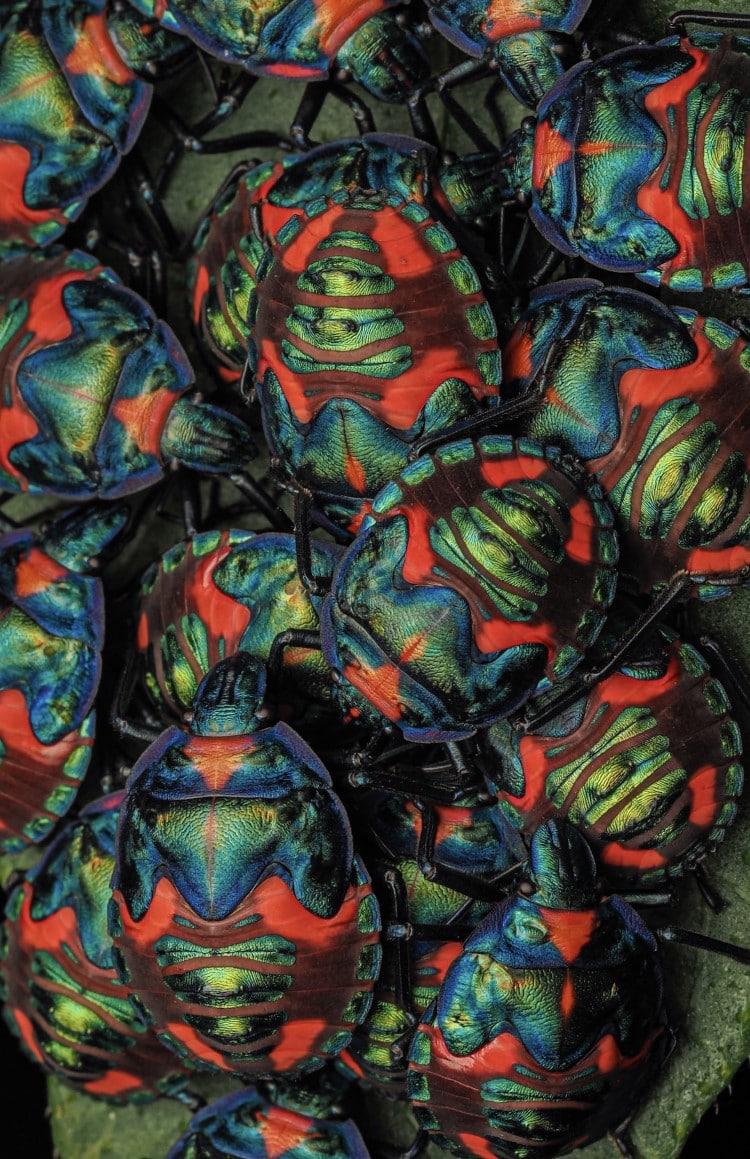
“Natures jewels” by Nikita Richardson (Australia). Behavior Specially Commended.Species: Cotton harlequin bugs, Tectocoris diophthalmus, final-instar nymphs.“A cluster of male harlequin bugs.”

“Earwig” by Zhang Yimeng (China). Under 18 Smartphone Specially Commended.Species: Earwig, Eudohrnia metallica“I took a walk in Yunnan in the evening to see it, very beautiful, lying on a leaf so I took a picture.”

“Junk bug” by Rosa Dunbar (Australia). Behavior Specially Commended.Species: Lacewing larva, Chrysopa sp.“The junk bug, a voracious predator in the insect world, earns its name by wearing plant matter and the exoskeletons of past victims on its back as part of an intricate camouflage to deceive predators.”